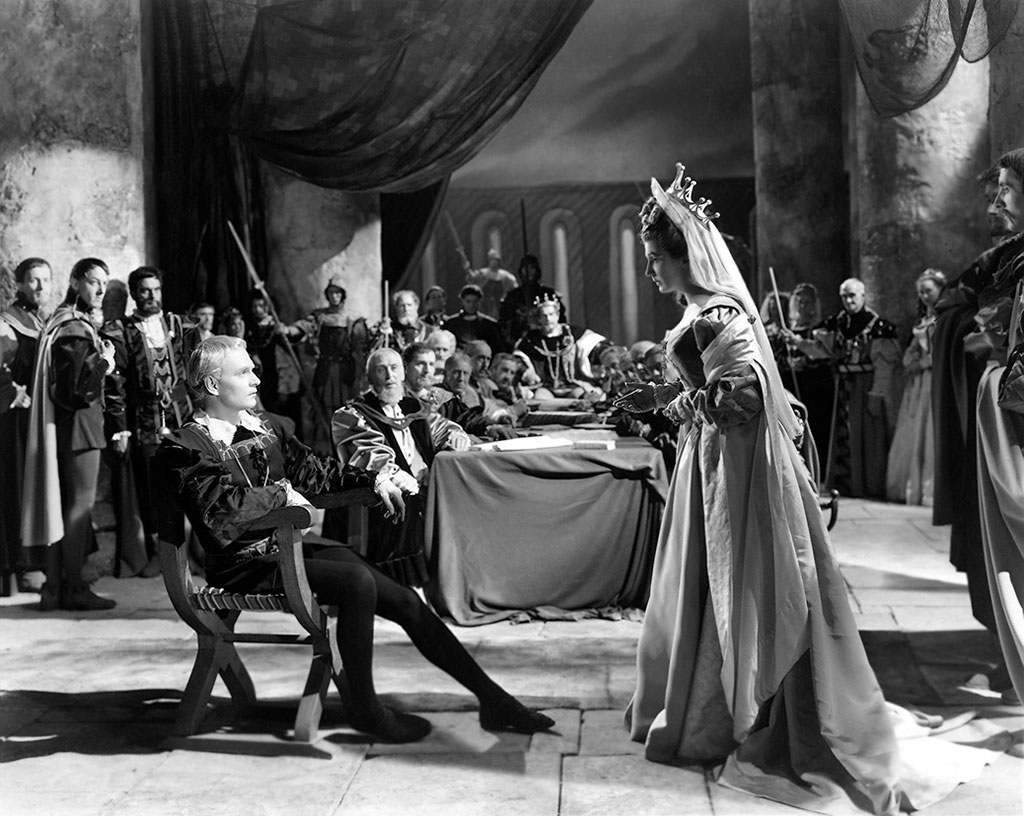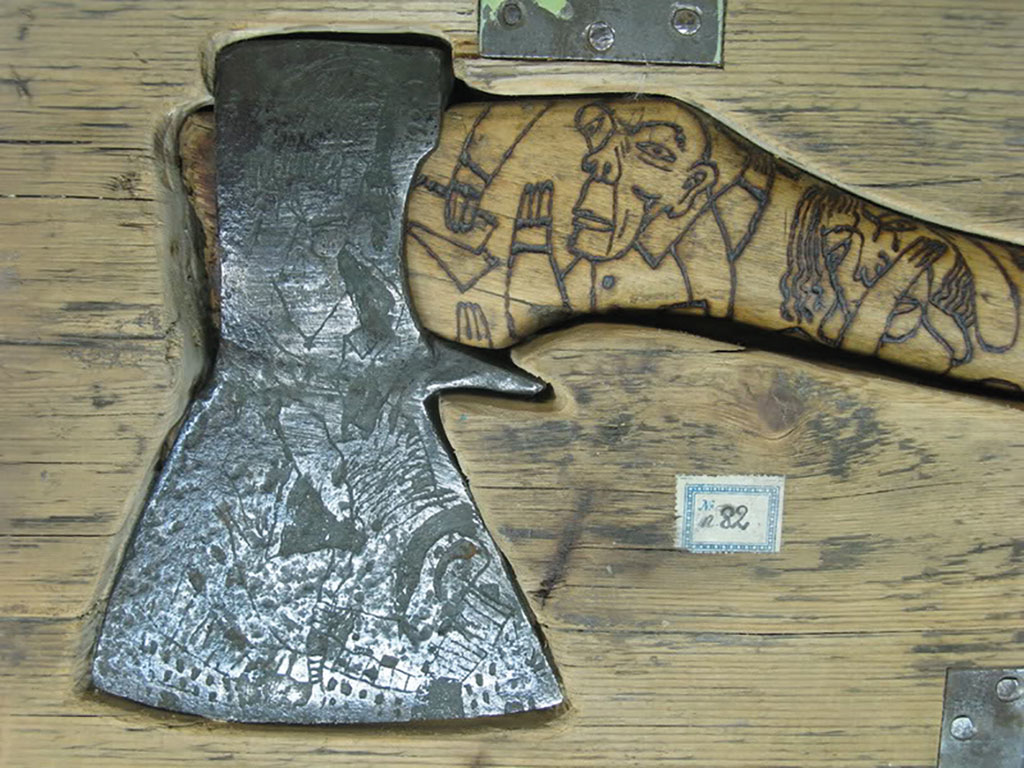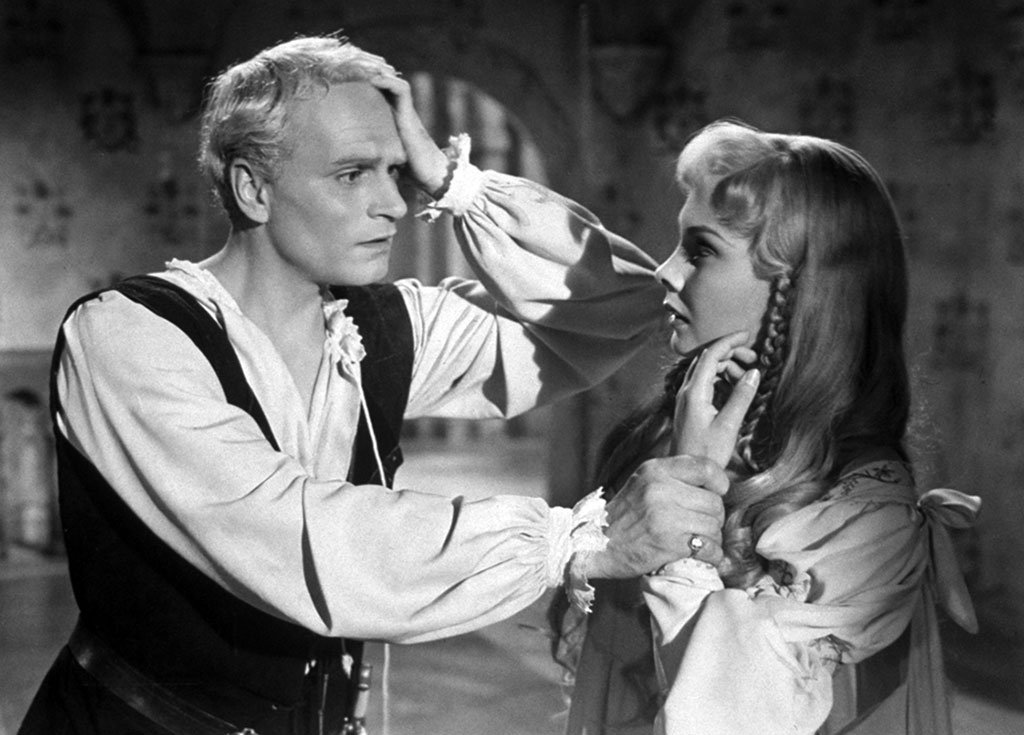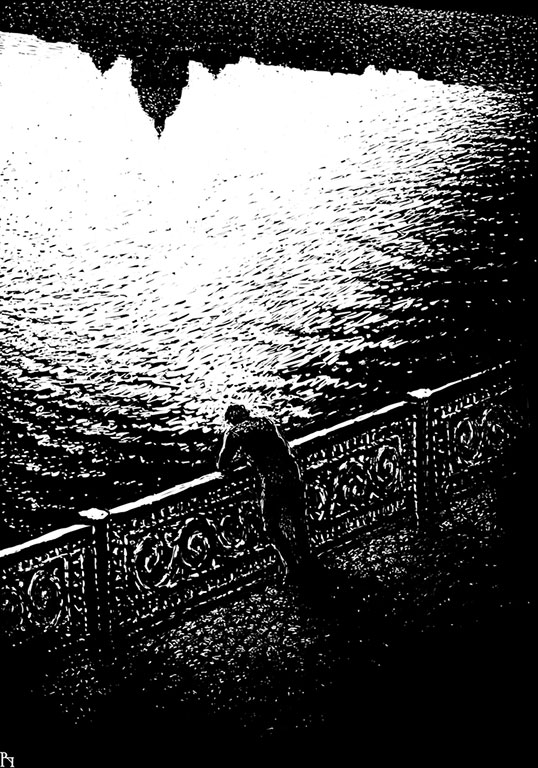Archives 2017
Hamlet and Raskolnikov – Renaissance and the 19th Century
Gyula Király (1927–2011), who established a new school of thought in the Hungarian research of Dostoevsky, published his study in a volume in 1983 (Dosztojevszkij és az orosz próza /Dostoevsky and Russian Prose/). The English version[*] of it is presented now in an abbreviated form. In his comparative analysis, the author focuses on the main difference between the ways these two iconic heroes ask questions about reality. He concludes that while Hamlet, the Renaissance man, had the opportunity before rising to action to test whether his assumption was true or false in the famous “Mousetrap” scene of the tragedy, Raskolnikov, a man of the 19th century, had no such chance. The publication of this study is relevant because of the two Dostoevsky productions at MITEM this year (The Crocodile, directed by Valery Fokin; Crime and Punishment, directed by Attila Vidnyánszky) and also the professional roundtable about the novelist’s oeuvre and his relationship with the theatre (of which an other study by Gyula Király was published in the February 2017 issue of Szcenárium).
Shakespeare is a landmark in the construction of tragedy: he intersperses tragedy with novelistic and dramatic threads – he opens the play with a novelistic drama and we are faced with this novelistic drama actually up to the actors’ play. Here the drama does not, really cannot, yet slide into tragedy. Hamlet starts with a test: he needs to ascertain his apprehension whether time is really out of joint. Tragedy is still to follow; Hamlet would not be the tragic hero of modern times if he passed up this experiment, if he did not start with the intellectual’s certitude and took combat with mere conviction or prejudice, if he simply accepted the revenge.

However, the test will whirl the experimenter himself into a new situation: having staged the play Hamlet gives his intention away to Claudius and his playing mad shows through. And from then on the crucial question is at stake whether the hero endowed with the ability to recognize and gauge his predicament is capable of carrying out the recognized historical task. But from the same moment onwards his enemy is constrained to put on pretence and accept a situation which contains the scheme of a subsequent murder – thus the possibility for a tragic solution comes about. Time can be set right, at the cost of the tragic clash of Hamlet and Claudius, though.
In Raskolnikov’s story too a novelistic drama takes place except that, as opposed to Hamlet’s drama, in reverse as to its chronological order: the actual drama will set in after the tragic plight, the execution of the murder. For the crucial point, the highest stake for Dostoevsky is not whether Raskolnikov gives himself up at the end of the novel or not; he is rather interested in what spheres of the social existence and consciousness the hero explores in the novel turned dramatic after the tragic situation, what truths he elicits, how he presses the world for an answer which he was unable to obtain in the tragic deed. The Russian life depicted in the basic situation of Dostoevsky’s novel necessarily accounts for the fact that Dostoevsky’s hero is devoid of any moral support whatever for an experiment similar to that of Hamlet. It is this Russian milieu, inscrutable as it is, which compells him to act before having fully found out that his truth is really the truth of life as well, that time out of joint can be set right by the individual and that a person responsible for history or for its formation is to do as his speculations had led him to assume. Raskolnikov cannot delay the solution, cannot question again and again the world which he intuitively grasps but has not yet deciphered. Should we approach the basic situation of Dostoevsky’s hero from the opposite direction, the same conclusion might be drawn. Could it really be taken to be a test, a “probe” into reality that a man, pernicious ashe or she may have become socially, is slain by another, however useful, person? Seeking for an answer in either direction, we are bound, to say no. An act, an action with due consequence can never be regarded simply as a “test”. Raskolnikov himself surmises with all his nerve that “test” and “act” have sinisterly intertwined in his conception, but how and why he is unable to understand throughout.

Already in Shakespeare’s tragedy we may confront such a motif of “test”, which is then brought into focus in the concept of Dostoevsky’s novel. We have that “delay” in mind which at the same time indicates in Shakespeare’s work the transition from drama into tragedy proper, the momentum when Hamlet, having had his father’s visionary appearance, does not set about carrying out his revenge – which he had made an oath on – but embarks on confirming the vision, probing into the “psychological” truth of the vision. He is doing so because he wants to put to the test the authenticity of the vision in order to know whether Claudius is his father’s murderer as his suspicion (and his father’s ghost: in modern sense his psychological insight) prompted him. Thus Hamlet plays a role, the role of madness, for, Renaissance man conceived, the act cannot precede ascertainment, it cannot precede judgment and this is what accounts for Hamlet’s delay, “vacillation” and “doubtfulness” not only psychologically but also from an intellectual point of view.

In Shakespeare’s drama this passage is worked out extremely minutely and purposefully. Raskolnikov too finds himself in a new situation, as Hamlet did, so “knowledge” for him prior to the act may be hypothetical only. If, however, Hamlet’s revenge took place when he is yet intellectually uncertain as to Claudius’ culpability, then Hamlet’s notion of time to be set right would lose all its historical gravity and justification. So the pivot of dramatic construction is the ascertainment, the individual form of cognition, which in itself is part of the action and thus influences the preconditions of it, changes the basic situation. (…)
Surely, Hamlet’s experiment is dearly bought, but in a different sense; the successful experiment reveals the make-believer, the question-poser who is keen to know, it unmasks Hamlet’s carefully concealed thought of revenge. The actors invited to dispel Hamlet’s gloom, with the play they perform under Hamlet’s direction, elicit the secret of Claudius, but at the same time Claudius also gains proof of Hamlet’s pretence and purpose. Here he learns what he could not find out when eavesdropping on the meeting of Hamlet and Ophelia and what the schoolmates called on to entertain Hamlet were unable to spy out either. A new situation emerges where playing the fool becomes impossible – Hamlet cannot carry out his revenge. On the contrary: it is Claudius that has an opportunity to “scheme” against Hamlet. And this is justified psychologically as well; when we are questioning reality and the answer will actually be profound and true, then with the question we lose and give up our advantage inherent in the questioner’s position, the possibility of an “incognito” existing prior to the questioning – we deliver up ourselves, too. Hamlet’s chance for action will return only when Claudius’ scheme has aborted, when it contributes for Hamlet to recover his opportunity of action in its original purpose: not as an act of revenge but as doing justice, judgment. (…)

Dostoevsky puts a finger on the truly essential problem of the divergent historical situation: for Raskolnikov test and act are inseparable. In vain does the hero try to play down the act as a mere test, in vain does he relegate the murder along with his later good deeds to the rank of redeemable evils, it is in fact here that we can detect the Toulon expected to give the answer. And the hero does eventually receive an answer to one level of those implied in the question. Namely, that is he really one of the great men who – in his concept – are the movers of history, or one of the crowd. True, here again remains one factor of uncertainty which is at least as decisive as the question some time before the execution of the act that the test was a test indeed or it was the act itself.
In the modern age the issues of history-shaping and of human responsibility continue to be indiscernable in the individual’s solitary assumption of responsibility. At the same time the social situation compells to act and question simultaneously. This is Raskolnikov’s “to be or not to be” dilemma, inner factor of uncertainty compared to Hamlet’s outer one. (This factor of uncertainty will be expressed in Raskolnikov’s question: would Napoleon have killed the old woman if he, say, had not had his Toulon.) (…)
Raskolnikov’s situation is fashioned by Dostoevsky – in compliance with the development of the individual and historical relations of the 19th century – so that the hero should be forced to act before being able to mentally control its justification. Further action – that is, to regard the test as a test proper with a view to a subsequent act – is on this very account impossible. This “probe–test”, unlike that of Hamlet, instead of liberating the person as act-doer, causes him to pretence. Whoever plays a role might question reality, but the answer will be incidental, his triumph relative.
The key to the failure of Julian Sorel’s pretence is also to be found here: essentially good, he wants nevertheless to play the foul, just to attain his aim. Yet his aim does not serve to set time right, and therefore it is the Evil itself, the play turns from role into reality and this at one stage brings the dissembler into a detrimental position, or evon exposes him, and no indemnification is to be had for this. A historically disadvantageous position of this kind is momentous in the scheme of Raskolnikov’s play-acting, too. And the paradox of the situation is that he needs to play the role vis-à-vis Porfiry, who himself is under the protection of the “disjointed time” and defends it himself. But to no avail is the aim more than that of Sorel in Rouge et noir or that of Lucien Rubempré in Illusions perdues – and in vain is the carrying out more consistent.

Crime and Punishment, drawing, 1964 (source: illustrators.ru)
Raskolnikov’s article written half year and published two months earlier expounds a theory which he had already discarded, that’s why it is excluded from the novel, it is prior to the novel’s time. Its function in the novel, put there after the act in a definite situation, is that the hero, by virtue of his being the author, should question after the act the arguments proposed in the article. Although the possibilities are accurately shut off by Porfiry, Raskolnikov does find a loophole all the time just on account of his surpassing the earlier concept. Porfiry can question Raskolnikov’s “theses” – and in so doing he compells Raskolnikov to confront his theory with his new experimented worldview. Thus the ambiguous position of self-defence has a negative side to it. At first sight it seems – and this is Porfiry’s intellectual perspective as well – as though it had not been this reality, with extreme alternatives and dilemmas, to cause the hero to connect act and test. Apparently, the notion arises as if his world-view, ideology propounded in the article had been at work behind his “test”, that is, behind his real intentions and not a confrontation with the world and a gradual awareness of the world; as though it had not been the same reality which offered Raskolnikov to “make a choice” with its condition of “blood flows everywhere”, with its alternative “in case you do it you are unfortunate, you don’t do it, you are perhaps even more unfortunate”, the catastrophe of the Marmeladov-family, the marriage threatening Dunya, the laws governing Porfiry’s, Luzin’s and Svidrigailov’s wolds, in short the public conditions and the mood of the day.
The argument-duel between Porfiry and Raskolnikov is instrumental to qualify from a definite point of view the act-attempt of Raskolnikov, so that, in some kind of a distorted mirror, Raskolnikov’s act should be rendered before the reader as an answer to the relationship of individual and society.
As a matter of fact, Raskolnikov’s act continues to be unexposed before Porfiry and the majority of the characters; what does come to light is unprovable, so the play-acting remains what it has ever been, a denial of the act. Yet this does not protect Raskolnikov from being judged by the outer world any more than it protected Hamlet or Claudius, even though he goes on under cover of play-acting up to the last moment in order to dodge the Qualification of his purpose.
Hamlet’s purpose remains in obscurity as long as he cannot but take vengeance on the invading power. After he exposed his purpose his open action presses Claudius to take on pretence with all its compulsive consequences: the irreversibility of tragedies. Because of pretence Hamlet was compelled to a frank monolog and a feigned dialog, just like Claudius here or Raskolnikov when he has committed the murder.
But in the case of Hamlet the fates of the characters surrounding him are not even a distorted mirror of Hamlet’s state of mind or action, rather the other way round: Hamlet is the flawless mirror into which each of the characters is bound to glance some day and to judge his or her own way of life and actions. This happens to Polonius too, who was so confident when supplying

Laertes with his paternal advice for his long journey. When he undertakes to pry into the thoughts of Hamlet labeled mad, he senses wisdom from behind his partner’s words, which is all at once a largely unfavourable qualification of his own principle of life. Ophelia came to realize that, taking advantage of her naive child-like goodness, her father and the king had actually meant her to “snatch” Hamlet’s thoughts (in the church-scene), and it becomes unbearable for her that she has thus proved unworthy of Hamlet. Ophelia as a child shrank from condemning her father’s overtly immoral deeds, but now – when Hamlet’s random sword passes sentence on her father – as one who has been unworthy of her companion feels guilty herself, and this self-accusation is irresolvable: she has lost her father as well as herself. Laertes looks into this mirror right before his death: (when the queen drinks from the chalice which turns out to be poisoned) suddenly he can see Hamlet’s purity and the difference between Hamlet’s revenge for his father and his own, and with his confession-admonition he is the only one to regain in the last minute the historical role.
Hamlet can at best look into the mirror of himself, and this commands him to be in a perennial state of monologizing. At one stage before the last act he might still withdraw from this sate of monologizing, i.e. at the moment when he meets Fortinbras’ soldiers. But these are soldiers and he a prince; the information acquired permits of a monolog once again.

Raskolnikov’s situation is quite dissimilar. The monolog will last until the murder puts an end on several levels of life to this monolog-potential and transforms it again and again into dialog. The dialogs in Raskolnikov’s situation are at the same time those of similar fates, the probes into reality of similar tests; they are answers of similar deeds and answers of another level, of different ethic motive and of different social outcome, but eventually common ones which concern the protagonist as well. Of fates and not of tragedies. That is why these alien fates and actions are themselves merely distorted mirrors of Raskolnikov’s act, and for the very same reason further dialog will on one point always prove distorted, so a dramatic turn is impossible to reach. The role performed is therefore unacceptable, but in it time comes undone, spreads out, for the time challenged but left unconquered demands closure by a fate shirking thus the tragic possibility and dramatic clash alike. (…)
Raskolnikov’s adventure in the realm of mind after the act tends to steal back something into the fact of the act which has, in the course of realization, been almost ousted: the questioning of reality. This is a fight, an intellectual adventure exceeding to a similar degree, coupled with extreme oscillations of answers given to the question, as it was in Hamlet’s dilemma of “To be or not to be” (i.e. in the drama up to the turn into tragedy). Even the alternative “to die is better” or “to back out of the situation” arises in the same manner for Raskolnikov as for Hamlet. And this backing out, this “to die” is just as impossible here as there. In contrast with Svidrigailov in Crime and Punishment or with Stavrogin in The Devils – for whom such a solution might in any moment be expedient since it belongs to the logic of their destiny within the milieu of the novels – the spiritual aspirations and the fates of Myshkin, Ivan Karamazov and Raskolnikov renounce to embrace such a solution: and renounce they must even though now and then they do encounter situations in which a way out like this seems to offer up as a solution.

In the novel, neither Raskolnikov nor the other characters are able to separate the questioning of reality from essential action. Their common dilemma is this inseparability: proper action is possible only when the test and knowledge of human fate have been achieved. On the other hand, human fate seals the active man’s possibility, cuts him off once for all from a vital relation with the world.
Raskolnikov anxiously sets his own attempt and decision into opposition with those of Svidrigailov, Dunya and Sonya in spite of the fact that he “the elect” is not alone in sensing that “time is out of joint”, but the others, “the crowd”, too, senses it. Moreover, with no theory to refer to, they too violate the norm the upsetting of which seemed for Raskolnikov in his article written half a year earlier, to have been the sole privilege of the elect. This experience indicates the first step beyond the abstract theoretical thesis expounded in the article “great men have rights – the masses are a tool”. Porfiry in his argument with Raskolnikov falls short because he cannot decipher this new Raskolnikovian experience from the article. Such an experimental world-approach originating in social practice is unfathomable for Porfiry. Porfiry – as well as Luzhin – considers the displaced nature of time not as a displacement but as an eternal human predicament, and from this both characters draw for themselves the necessary and advantageous existential conclusions. Both Luzhin and Porfiry, in respect of their social essence stand in opposition to those who are unable to adapt their human individualities to this social order proclaimed “world order”.
Hamlet was alone in recognizing the displaced nature of time; 19th century man, however, senses it in social dimensions. And this is not merely a proof against the “single self’s” calling, but it is in favour of something which is alluded to in The Devils in its negative consequences. The positive allusion, which would come in the figure of Alyosha in the second part of The Brothers Karamazov, remains but a plan. But as regards the posing of the question, Dostoevsky is again the most profound compared with his contemporaries. In his novels starting from Crime and Punishment he causes almost every stratum of society to live through simultaneously the inhumanity and anti-individual nature of the prevailing order. (…)
Raskolnikov has to lend an ear to t he blame of his environment, even of himself, in order to qualify his act: was it a murder, a theoretical “murder” what he had done or an attempt, an abortive deed, an act to be disclaimed, misunderstanding or a crime committed in an irresponsible state of mind? And the act shows now one face now the other in the second part labeled psychological. Raskolnikov’s entire struggle after the murder not to give himself up becomes justified on moral grounds by the fact that on the level of purposes, or even on the level of external – social-ideological – factors underlying the purposes the deed will not become clear by the sheer fact of its having been committed. Raskolnikov’s descent to hell lasts until he has given himself up, but should he give himself up – the opportunity for further questioning stops. Therefore, Raskolnikov tells Sonya that he has killed the old woman not only because Sonya “understands” him, because she would not reprove him – she herself is also beyond the limits both social-moral and human. Raskolnikov confesses to her rather because in the situation of play-acting into which he has got by the denial of the act – the deeper layers of the motives for the act are inaccessible. The duel with Porfiry may yield only the attitude “I’m not the murderer” or “even if I were, you couldn’t take me up on that” or “I’m not a murderer, I’m an avenger”.

Any debate more to the point would make a self-denunciation, as it surely does: the moment Raskolnikov forgets about the attitude of dissembling, about the necessity of forcing out essential answers which are decisive even for himself, about finding out the truth, he is suddenly faced with a malevolent, victorious Porfiry. The only theme where he might defend the truth of his theory is the article, but it has in the meantime lost its relevance. Then the thesis was held that one was free to kill. Whereas both before and after the murder the crucial question is: “is he free to do it? was he free to do it?” Sonya is the partner who before the giving up provides the situation for Raskolnikov where he can withdraw from the play-acting and he can supply an answer from utterly divergent points of view or can ask for one from his partner.
Svidrigailov, too, is ready in his dialog with Raskolnikov to create this situation devoid of dissembling. The snag is that the price is too high: an identification of the ultimate meaning of both their deeds: a kind of offer to put a stop to any further questioning, and this is why Raskolnikov cannot accept it (just as the acceptance of Porfiry’s offer might involve such a price of giving an answer, excluding further inquiries). This again would be one kind of answer but, since the act cannot be traced back to a single motive, so the closure, the answer to the question “what was then the act?” cannot be one-dimensional either.
The second part of the novel is a polyphonic answer, closure, and almost every one of these returns in the conversations with Sonya. Raskolnikov is sincere only towards her, unconditionally and without play-acting. True, he does pay his price for this: Sonya is the one who eventually will bring him to give himself up before ever getting a positive answer to his own quandary. This also accounts for the fact that the Raskolnikov-question does not, cannot, in fact, come to a halt with Raskolnikov’s fate, as it is of broader implication, so it rightly continues in the epilog indicating the interminableness of Raskolnikov’s voice (similarly to Onegin’s and Tatyana’s encounter which could not close the philosophical problems raised by their fates, it could merely be instrumental in setting off a string of novels where we confront the rendez-vous and partings of so many Onegins and Tatyanas). We do learn, however, that in this fate-closure the interpretation of Raskolnikov’s act in the concepts of Porfiry, Luzhin, Dunya, Svidrigailov and even of Sonya has proved inadequate.
Of course, in the Dostoevskian concept of novel the issue is unresolved on the level of the characters and on the level of their mental horizons, for the question itself is central and decisive in the 19th century: how is it possible to separate the genetic and social ethics that are fetish-like entangled by means of an act shaping society; how can one undertake to shape history so that his action may give rise to essential changes and result in the abolishment of antagonisms prevalent in social coexistence; and is this really achievable by virtue of the ever so heroic and devoted action of the individual?
Thus Raskolnikov falters on the very point where Hamlet cannot have been uncertain, i.e. in the question whether he is the one born to set time right. Concerning whether he has found a substitute for the Napoleonic Toulon the brooding-self-consuming hero’s answers will later on be digressing in different ways. It is undoubtedly proven, however, that one may not and must not question reality at the expense Raskolnikov thought was allowed. Not only because greatness, human greatness is the result of a process of actions and lacks a priori existence, but also because becoming great is not an issue of psychology but a social-historical relationship. Dostoevsky will then put it in terms of logic: a long series of intellectual and ethical efforts are needed on the part of the individual so that his questioning of reality should spring not from selfish curiosity but from reality-forming responsibility and endeavour.
[*] Cf. Acta Litteraria Academiae Scientiarum Hungaricae Tomus 21 (1–2), pp. 15–43 (1979)
(15 April 2017)











